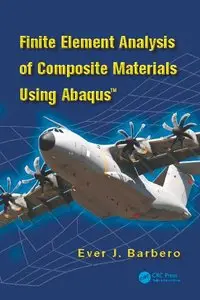Finite Element Analysis of Composite Materials using Abaqus(TM) by Ever J. Barbero
English | 2013 | ISBN: 1466516615 | 444 pages | PDF | 5,3 MB
English | 2013 | ISBN: 1466516615 | 444 pages | PDF | 5,3 MB
Developed from the author’s graduate-level course on advanced mechanics of composite materials, Finite Element Analysis of Composite Materials with Abaqus™ shows how powerful finite element tools address practical problems in the structural analysis of composites. Unlike other texts, this one takes the theory to a hands-on level by actually solving problems. It explains the concepts involved in the detailed analysis of composites, the mechanics needed to translate those concepts into a mathematical representation of the physical reality, and the solution of the resulting boundary value problems using the commercial finite element analysis software Abaqus.
The first seven chapters provide material ideal for a one-semester course. Along with offering an introduction to finite element analysis for readers without prior knowledge of the finite element method (FEM), these chapters cover the elasticity and strength of laminates, buckling analysis, free edge stresses, computational micromechanics, and viscoelastic models and composites. Emphasizing hereditary phenomena, the book goes on to discuss continuum and discrete damage mechanics as well as delaminations.
More than 50 fully developed examples are interspersed with the theory, more than 75 exercises are included at the end of each chapter, and more than 50 separate pieces of Abaqus pseudocode illustrate the solution of example problems. The author’s website offers the relevant Abaqus and MATLAB® model files available for download, enabling readers to easily reproduce the examples and complete the exercises. The text also shows readers how to extend the capabilities of Abaqus via "user subroutines" and Python scripting.



